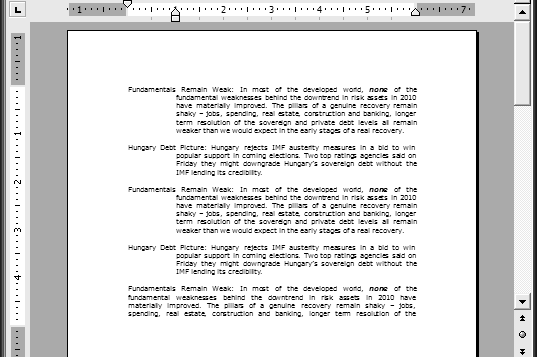
Footnotes can also contain acknowledgments.

These comments can be supplemental information to clarify points you're making in your text, or they could be interesting bits of information that are important to include but that would interrupt the flow of your paper.
Footnotes may contain citations for references like books or journal articles, or they may contain your own comments. Indent footnotes with a 1/2 inch margin but flush all other lines left. Footnotes should be at the end of the reference page. Never reuse a note number or use two note numbers at the end of a single sentence. Note numbers should begin again at 1 for each chapter (always use Arabic numerals, never Roman). Note numbers should start with 1 and follow in numerical order throughout a paper unless your paper contains several chapters. You may use the ibid abbreviation if you use the same reference in consecutive quotes or are using a reference just cited. INDENTING PARAGRAPHS FULL
Use a full citation the first time you refer to a specific source afterward, you may use an abbreviated reference such as the author's name or part of the title, along with a page number. These differences are displayed in the image above, which shows a citation for a book. The bibliography entry separates items (like author and title) with a period. Type notes in single-space with a full space between separate notes. For example, the footnote contains commas to separate items like author and title, and the entire note ends with a period. Formatting in footnotes is different from the formatting in your bibliographic citations, even though they will refer to the same documents or books. When creating these notes, keep in mind these important general formatting considerations. It is common for instructors to require a notes-bibliography system (footnotes or endnotes) in an essay or report and for this to be in the Chicago or Turabian style of writing. Insert a footnote as you refer to each appendix item and direct the reader to the proper entry, as in a footnote that reads: See Appendix 1. Number your examples Appendix 1, Appendix 2, and so on. It is best to place tables and other supporting data sets or examples at the end of a paper. Titles are not to be bolded, italicized, enlarged, underlined, placed in quotation marks, or written in any font other than Times New Roman 12 point. Each of these items should be on their own line. Center your name on the line below the title, followed by your instructor's full name, the course name, and date. When you are using a subtitle, place it on the line below the title and use a colon after the title to introduce it. Center titles at around the halfway point of your cover page. 
Your paper should be arranged in this order: Use either footnotes or endnotes as needed (more on notes in the following section).Your bibliography should contain the final page number.Don't put a page number on the title/cover page.Put your page numbers on the righthand side of a page's header.

Use 12 point Times New Roman font always unless your instructor has explicitly asked for something else.You might need to go into your paper's settings to change the automatic size of indents when you press "tab," but most word processors default to 1/2 inch indentations. Reformatting can get messy, but you can always ask your professor for help with this.Īs for line spacing, your paper should be double-spaced throughout, excepting only block quotes, captions, and titles.Ĭhicago Style dictates that you use 1/2 inch indents before all paragraphs, bibliographies, and block quotes. Chicago style requires one-inch margins on the top, sides, and bottom of your paper. If you're following Chicago style, you'll need to make sure that your margins are the right size. Instructors normally ask for a margin of one inch, but the pre-set margin in your word processor might be 1.25 inches. Too many students fall into a trap when trying to adjust margins to adhere to a paper's requirements.







 0 kommentar(er)
0 kommentar(er)
